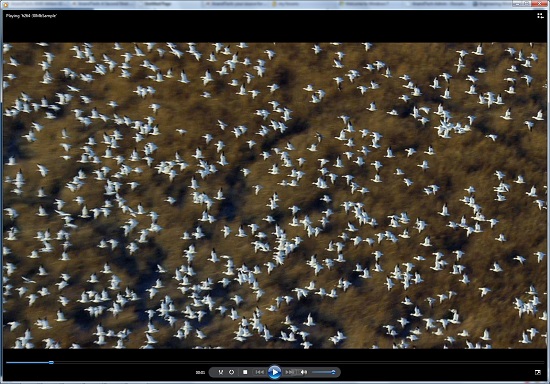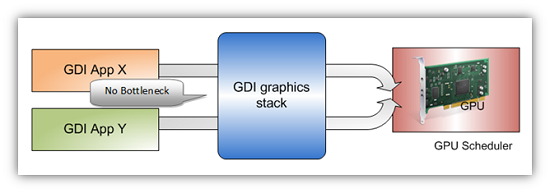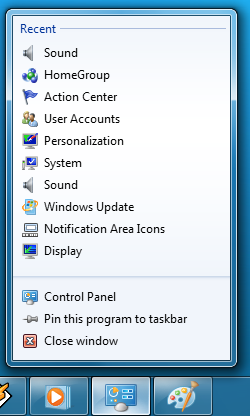Windows 7 Performance Guide
by Ryan Smith and Gary Key on October 26, 2009 12:00 AM EST- Posted in
- Systems
Feature Recap
As we have already covered the bulk of Windows 7’s new features in our look at the Windows 7 Release Candidate, we’re not going to spend too much time here. If you want an in-depth look at the new features, please see that article.
Performance
Vista’s performance was something of a quagmire. Even after SP1 fixed its biggest issues, it continued to be rather RAM hungry and poorly suited for low-end computers and newly minted cheap computers with the performance of older low-end computers. Netbooks made this situation particularly problematic for Microsoft, as their limited performance amplified this issue and resulted in netbooks shipping with Windows XP almost exclusively.
For Windows 7, Windows has been put on a diet in order to perform better on those machines. The most noticeable changes here are that Windows 7 eats less RAM and hard drive space out of the box than a comparable version of Vista did. There have also been some underlying tweaks to SuperFetch (it’s less aggressive on startup) and the kernel to improve responsiveness.
Our own experience here is that Microsoft has come through on this, although whether it’s enough is going to depend on just what someone is looking for. We have a few laptops where Vista was an absolute slug while Win7 runs just as well as Windows normally does. For someone looking for Win7 to perfectly replicate XP’s performance however, they’re going to come away disappointed – you’re never going to stuff something like Windows 7 in to the performance characteristics of an 8 year-old OS that forgoes real security and predates wireless networking.
Also while these changes should percolate to higher-end computers, the impact will be marginal at best. Vista had enough going on that it could bog-down low-end hardware, but hardware that as already capable of running Vista well isn’t going to greatly benefit from changes made to squeeze more out of the low-end. We’ll see this in detail later with our benchmarks.
Media
Windows’ media capabilities have been greatly augmented with Windows 7, primarily through the inclusion of decode and encode capabilities for a number of video and audio formats. While Vista included support for MPEG-2/1 and WMV9 video, Win7 has added support for much more contemporary codecs: H.264 and MPEG-4 (A)SP. Audio support has seen the inclusion of support for AAC and AAC+ audio, commonly found as companion audio streams for H.264 video, streaming internet radio, and portable media players.

Windows Media Player playing a 30Mb H.264 clip entirely in software without breaking a sweat
This gives Windows 7 the ability to play just about everything entirely out of the box, forging the need to deal with codec hell. The only notable things missing here are support for BluRay playback (you’ll need separate software), and some media container types (OGG, Matroska, MOV).
Encode support has been added for H.264 video and AAC audio through the Media Foundation Transcode class. This gives Win7 the ability to encode video on the fly for loading media on to portable media players and streaming to other devices (e.g. DLNA). However the use of this feature is quite limited at this time; only a handful of media players support the level of integration with Windows required to use the encoder. iPods need not apply.
Meanwhile Windows Media Center has seen its own improvements on top of the benefits it derives from greater codec support. At a high level this is a general UI touchup. At a low level this includes adding support for ClearQAM cable tuners, and the user-installation of CableCARD tuners.
Graphics
Windows 7 also brings about some additions to graphics capabilities. The headliner here is DirectX 11, whose introduction is being timed with the launch of Windows 7. DX11 is being released on Vista too any day now, so this is by no means an exclusive feature, but given the timing, it’s one of importance. We’ve already seen AMD launching their 5700 series and 5800 series ahead of Windows 7, so that they can have DX11-supporting cards on the shelves for this launch.
Windows 7-specific changes include the addition of WDDM 1.1, which is a minor update to the video driver stack for better memory utilization. This is accomplished by keeping the texture for a window (when using Aero for desktop composition) solely in VRAM instead of keeping a copy in local system memory too. WDDM 1.1 also brings support for heterogeneous display adapters, something Vista took away.
The GDI graphics stack has also been tweaked for performance reasons. Previously only a single application could write to it at once, making GDI writes a bottleneck. The stack has been changed so that now it’s the responsibility of the GPU to schedule multiple writes, rather than having an application blocked. We haven’t been able to find any performance cases where this is of help, however.

Images courtesy Microsoft
Low-Level
While Windows 7 is not the sizable overhaul of Windows that Vista was, it still has a few low-level changes. The biggest change for users is the official support for the TRIM command for SSDs, which will improve SSD write performance without the need for manual refreshes. The kernel’s dispatcher lock has also been rebuilt for better scaling; previously it effective topped out at 32 cores, now it scales to 256 cores. This will be more felt on the server branch, Windows Server 2008 R2.
Windows XP Mode
Primarily targeted at business users, Microsoft has officially added a derivative of their VirtualPC virtualization technology to Windows 7 in the form of Windows XP Mode. Windows XP Mode is a pre-configured Windows XP Pro virtual machine for running applications that just won’t run natively under Win7, allowing businesses to half-step to Windows 7 as part of a longer transition. It comes as a separate download available for Win7 Professional and higher editions, and no, it doesn’t run games.
Interface
The bulk of the changes in Windows 7 are going to be things that you can see, literally. Various interface elements have received drastic overhauls, and at the risk of slighting all of the other groups at Microsoft, more work appears to have been put in here than anywhere else.
Chief among these is the near-total replacement of the taskbar. The new Win7 taskbar is much closer to Mac OS X’s dock in appearance and function. Active applications appear on the taskbar as just large(r) versions of their application icon, and icons can be pinned in place so that they can be launched from the taskbar in the future, not unlike the old Quick Links feature. Undoubtedly, this is going to be the hardest thing for new users to get used to, although it’s certainly not hard to grow accustomed to.

The Control Panel Jump List
Along-side the dock taskbar are jump lists, which are replacing the normal right-click menu for items in the taskbar. Jump lists contain application specific commands, standard window manipulation commands, and recently used files for the application in question. Applications need to be coded to make full use of jump lists.
Also added are a pair of new Aero gestures. Aero Snap causes an application to be maximized when it’s dragged to the very edge of a screen, and returned to normal when dragged away. Aero Shake minimizes all other windows when a window has been shaken. Microsoft’s Rolodex-wannabe Flip3D is still here, much to our chagrin.
Other notable changes include gadgets, which have been liberated from the sidebar in order to reside on the desktop, and the classic Start Menu, which has been terminated entirely in favor of the Vista (and later) Start Menu. Finally, the whole default color scheme of Windows has been redone; pea green is out, blue/grey is in.
UAC
Finally, User Account Control, the fundamental underpinningsof Vista’s enhanced security, has also seen an overhaul. By reducing the integrity of UAC slightly so that by default it auto-elevates signed Microsoft programs, Microsoft hopes to reduce the perceived annoyance of UAC without compromising the actual security. As a result, UAC should be less noticeable, particularly when first setting up a computer. However there are possible security consequences of this, which we’ll get in to later











207 Comments
View All Comments
gutterslob - Tuesday, October 27, 2009 - link
Anandtech really needs someone that's better experienced at Linux.Now, I'm neither a Wintard or Freetard, but there's no balance whatsoever everytime I see them bring Ubuntu into the comparisons. I often wonder whether they broke their Linux install with the numbers they obtain.
I don't have Win7 yet, but there's no way Ubuntu 9.04 boots that slow. I've seen it boot faster on 3 yr old laptops. I've not tried Ubuntu 9.10 yet (I'm mainly a Debian user), but from al the tests I've seen, it should blow away Win7,Vista,XP in the boot speed department.
I agree that laptop battery life on Linux isn't as good as Windows out of the box, but a install a couple of apps (available on most distro repositories) and most people can get equal or better life on Linux. My Asus eeePC can run 8+hrs with on Arch Linux after minimal tweaking (I never got that much from XP even when the battery was brand new).
I seriously hope AnandTech finds someone who knows Linux better (at least someone with comparable levels of knowledge that AnandTech seems to have with Windows). I've met highschool students with better Linux Know-how than this place... which is a shame, really, because other than that, I think very highly of AnandTech.
Just my 2 cents
Cheers~
Voo - Tuesday, October 27, 2009 - link
"I agree that laptop battery life on Linux isn't as good as Windows out of the box, but a install a couple of apps (available on most distro repositories)"Well the vast majority of home users don't know which apps that would be and won't find out about them
And ArchLinux is a really sleek distribution, last time I checked the GUI wasn't even part of the standard installation. The same goes for self compiled kernels and similar things - certainly possibly but irrelevant for 99.99% of the users.
It's the out of the box performance that's interesting for the majority (after all they didn't do anything for Windows as well), the users who enjoy playing with their PC usually already use Linux and know the advantages.
JarredWalton - Wednesday, October 28, 2009 - link
FWIW, I worked with a "Linux Guru" -- a Senior Linux guy at a big OEM heavily involved with the ArchLinux community -- and we worked to run some additional tests on the NV52. So far, we didn't manage anything significantly better, but you can probably blame ATI's drivers as much as anything. We'll be working to expand Linux coverage (with him doing more of the work) in the future.Honestly, though, after spending the better part of two weeks going through numerous settings and trying to tweak ArchLinux to get significantly better battery life... well, I'm just not seeing it. I'm sure it's possible to do with the right hardware (i.e. NOT ATI!), but Linux is hardly a panacea. If you want good mobility, it's going to be tons easier for 99.999% of users to skip Linux (or get a netbook with Linux pre-installed).
JimmiG - Tuesday, October 27, 2009 - link
"The concern we have is that all of these auto-elevating programs are an obvious target for a local privilege escalation attack to accomplish something similar, if not the same. Imagine finding a way to make the Display control panel execute a 3rd party application with admin privileges, for example."Well, the same could be done in Vista... The control panel applets aren't auto-elevated, but anyone who plans on doing anything useful with them is going to elevate them anyway. So UAC in Win7 should be as effective in Win7 as it was in Vista, granting administrative privileges only to applications that really need it.
Also, the fact that UAC is less annoying is going to be a huge security improvement on its own since fewer users are likely to turn it off. Many users are good enough with computers to figure out how to turn off UAC, but don't know enough to realize that they compromise security by doing this. They think it's condescending, always questioning the user. In fact, the prompts are there to prevent malicious software from gaining sufficient privileges to compromise the computer system, not to prevent the user from performing the tasks he/she wants. That's why Server 2008, as well as OSX and almost every Linux distribution has a similar feature.
anandtech02148 - Tuesday, October 27, 2009 - link
Of all things, multiplayer pc gaming is not mention in windows 7 (10,000 beta testers they say), and apparently Punkbuster is the defacto use for pc multiplayers and the majority of the developers.Consumers will like windows 7, the level of shine and sleek looking is pretty close to MacOs even themes,background on win7 is enjoyable compare to the years of dull blue windows.
but what the crap, how long will i have to wait for a patch for this punkbuster.
haplo602 - Tuesday, October 27, 2009 - link
it seems to me that if Linux did what MS does with marketing, we'd have a new major Linux version every year :-) (under Linux I mean a distro like Suse or Ubuntu).too much hype about too little a change. basicaly they are milking $$$ out of people for performance that should have been in Vista and naming it Windows 7 ... yeah ... More like Vista SP1 that this should have been.
anyway I don't see a reason to upgrade from XP (moving to Linux completely on my next new HW build anyway).
Also, to the folks complaining about missing codecs, mail client and whatnot. MS is essentialy stupid. If they followed the Linux distro model, they could just sell the core OS to OEMs and let them create distributions with any applications the OEMs like. This way they get around the anti-trust issues and also get rid of supporting the distributions. but guess they are too stupid to do that.
Chlorus - Tuesday, October 27, 2009 - link
"Also, to the folks complaining about missing codecs, mail client and whatnot. MS is essentialy stupid."Yeah, because the distro vendors make so much money! Oh wait...
alpine18 - Tuesday, October 27, 2009 - link
In 1995 I remember talking to an older guy that worked at Radio Shack about Windows. He said he'd never upgrade from Windows 3.1 to Windows 95 because he said the memory usage was wasteful, and because even the OK buttons took up 16K of memory each.Over the years have I often wondered if he is still running Windows 3.1.
xrror - Tuesday, October 27, 2009 - link
Problem is, he was right...It's wasn't so great to watch your decked out 4mb 386 that worked well in win3.11 choke horribly just trying to load the win95 taskbar.
Then again, it didn't really help that Microsoft was saying win95 worked fine with 4mb ram. Note fine doesn't imply being able to use more than one application at once.
heh, no the real question is if he is still running win3.1 exclusively
mejobloggs - Monday, October 26, 2009 - link
I have Vista... And from what I can see in this article, there is no point in upgrading to Win 7I'd upgrade for $20 or so, but anything more seems a waste of money